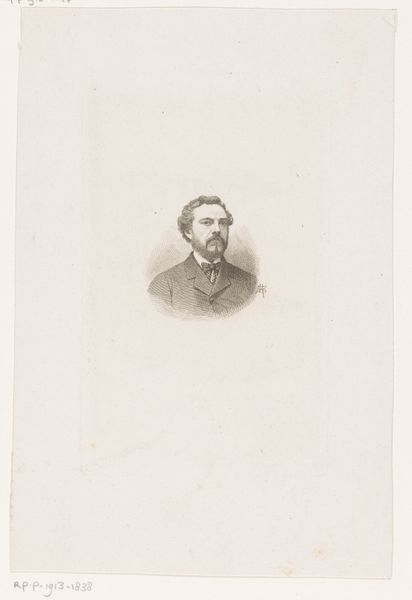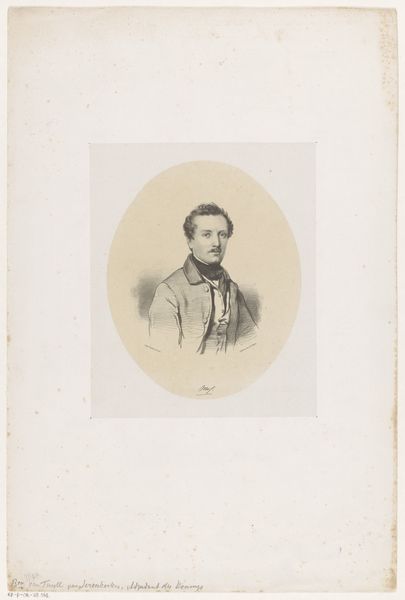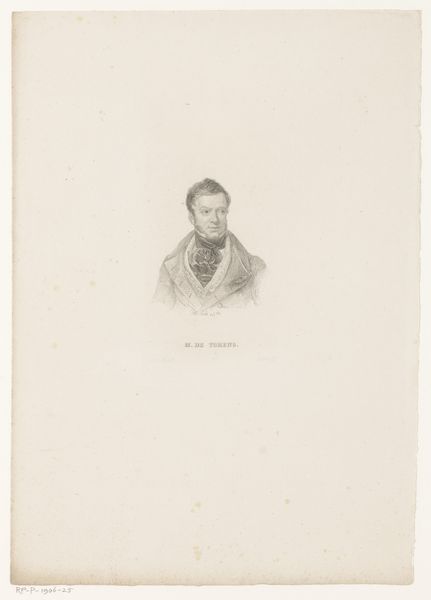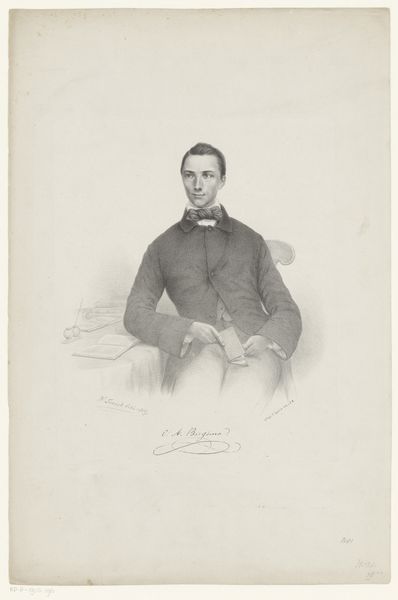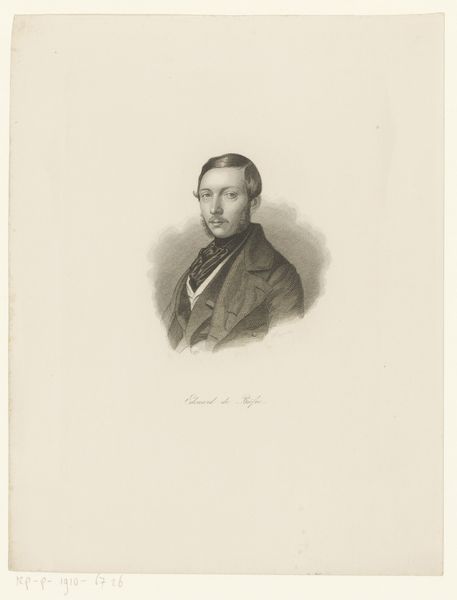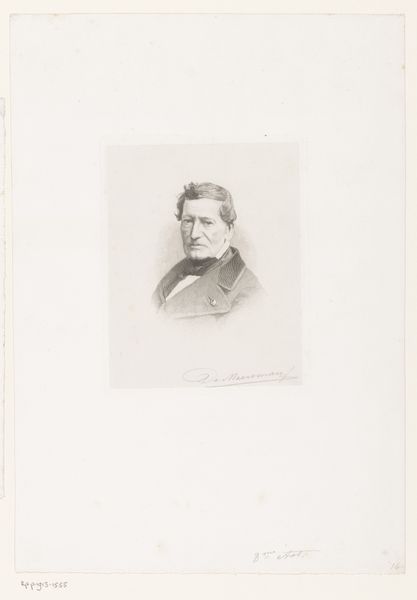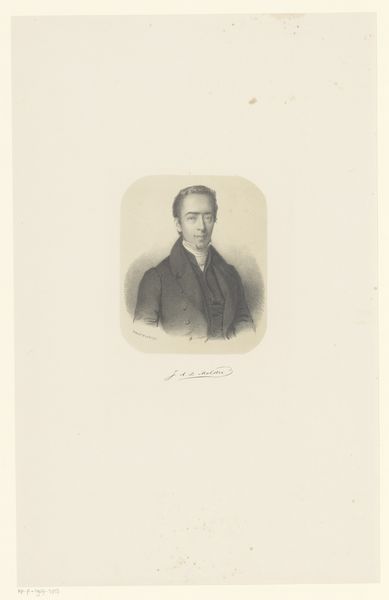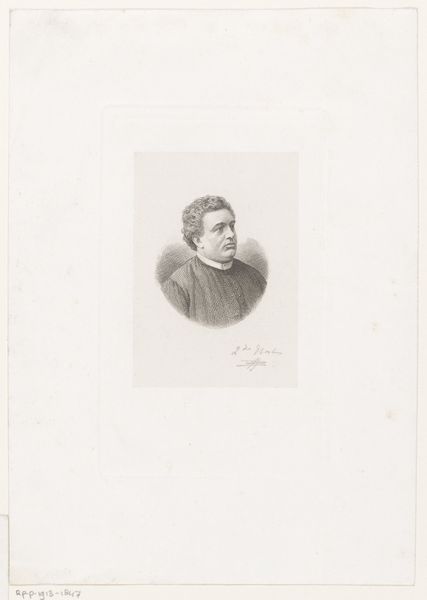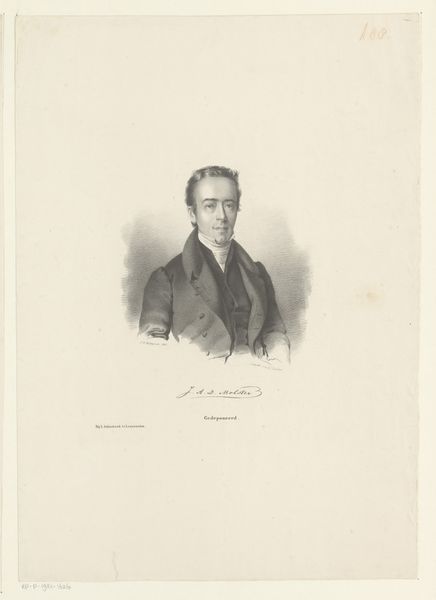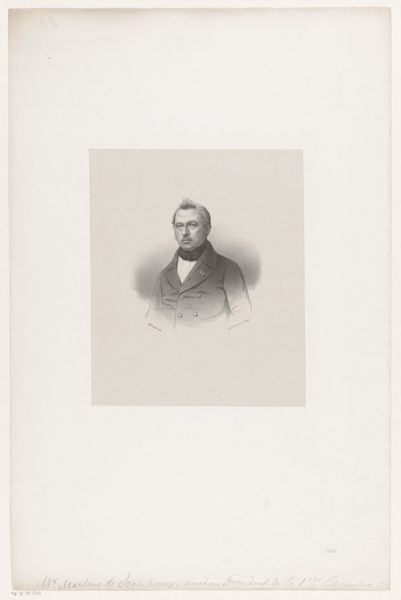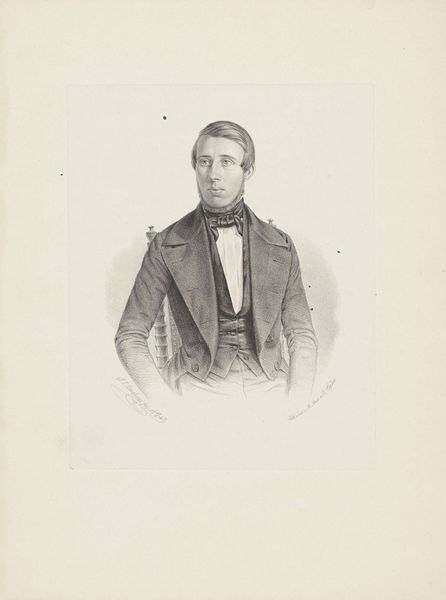
print, etching, graphite, engraving
#
portrait
#
pencil drawn
# print
#
etching
#
pencil drawing
#
graphite
#
engraving
#
realism
Dimensions: height 237 mm, width 160 mm
Copyright: Rijks Museum: Open Domain
Curator: Looking at this portrait, I’m struck by a certain melancholy. The soft graphite lines and monochromatic palette evoke a contemplative mood. Editor: Indeed. What we see here is "Portrait of Alfred Elsen," an etching dating from around 1880-1888 by Jean Baptiste Pierre Michiels. It resides here in the Rijksmuseum collection. Curator: Elsen's gaze is intense, but there's also a vulnerability in his eyes, an honesty perhaps, that’s captivating. There’s something haunting in the image. Editor: Absolutely. Consider the context of the late 19th century. Realism was a prominent movement, pushing for honest portrayals. Perhaps Michiels was reflecting Elsen’s own struggles or those of his class? This intense focus on the individual reflected changing social priorities. Curator: And it could be related to ideas of ideal masculine representation: confident, intellectual, and bourgeois. But if we look at the specific arrangement of elements within the frame, and the delicate handling of shadow, one wonders if he might represent something else... something in the margins. Editor: Tell me more. Curator: It is a "portrait", in the sense that there is representation, but one sees much about the human condition in general as a portrait of human struggle, in tension with class belonging. Editor: A reading layered with the complexities of personhood against the expectations of status. I'm drawn to that idea. Michiels captured something deeply personal within the confines of societal pressures. Curator: Portraits can often serve as vehicles for commentary on status and personhood, in tandem. And Michiels' medium lends a particularly subtle, intimate air to the entire image, despite its seeming simplicity. Editor: Reflecting on our discussion, it's interesting how this etching embodies both the spirit of its time and invites contemporary readings of individual and social conflict, through a very elegant medium. Curator: Yes, the persistence of these portraits is tied to the complex symbolism in what’s omitted as much as to what remains, especially the human condition and societal critique.
Comments
No comments
Be the first to comment and join the conversation on the ultimate creative platform.
